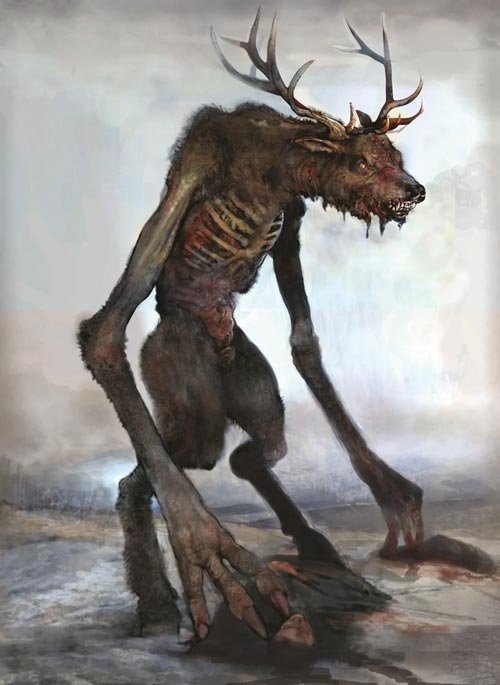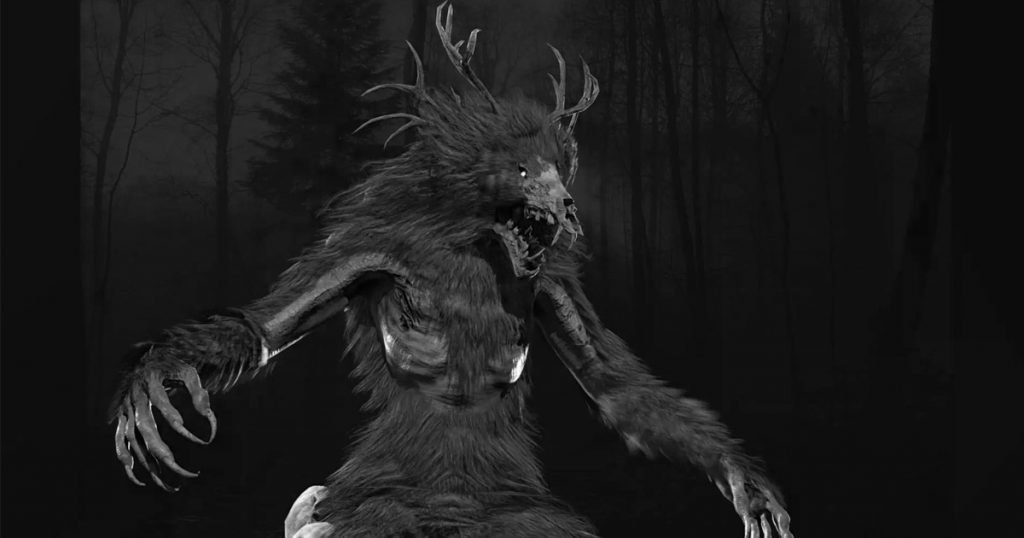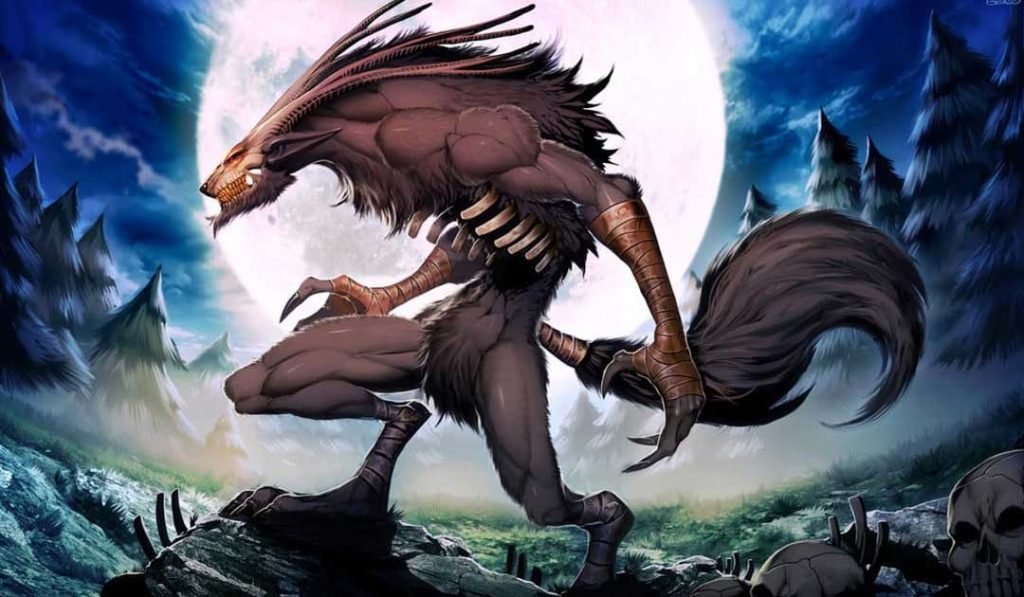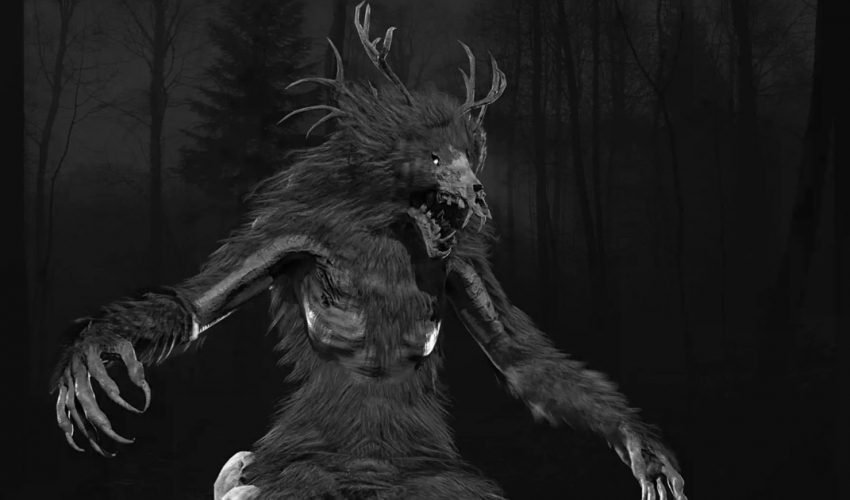Wendigo is a creature closely related to humans and always looking for humans to eat and satisfy its never-ending hunger. The name Wendigo originated from an Ojibwe word, wiindigoo. The word means evil spirit or cannibal.

Wendigo is a mythological creature or evil spirit originating in the folklore of First Nations people residing in and around the East Coast forests of Canada, the Great Plains region of the United States, and the Great Lakes region of the United States and Canada, who are classified as speakers of Algonquian-family languages in modern ethnology.
The wendigo is sometimes portrayed as an evil spirit, sometimes shown as a creature with human-like traits that inhabit humans. The Wendigo is said to instill feelings of insatiable greed/hunger, the urge to cannibalize other humans and the proclivity to murder in those who come into contact with it.
The origin of Wendigo?
There are many stories and versions based on the various cultures all around the world. When trying to trace back the origin of the first ever mention and sighting of the creature Wendigo, the tales go back to the Algonquian Native American folklore.

The land of Algonquins was apparently visited by a group of missionaries backs in 1661. At that time, the land of Algonquins was inhabited by a tribal group of Native Americans. This group lived along the forest regions of the Ottawa River.
The group that came travelling among the tribal people of that land fell ill. This statement is a very simple way of describing what those travelers saw and experienced there.
According to their accounts, the people who caught this so called ‘ailment’ were ravenous for human flesh. The more they ate, the more they pounced upon humans to satisfy their every growing greed for human flesh.
Some accounts describe this illness as some evil spirit who possessed monstrous instincts, this spirit captured human bodies and thus made them pounce on any human nearby to satisfy the spirit’s hunger for human flesh, no matter if they are a child, woman, man, or an older person.
Wendigos are normally seen in northern forests
The human flesh eaters or Wendigos, as these creatures are famously called, are said to roam in the northern forests of the United States Canada as per the old Algonquin legends.
The stories about it differ according to where in the world you’re hearing about it. Wendigos are also famously been compared to Werewolves and Bigfoot, due to the stories being also related to flesh eating monsters.
Story of the first Wendigo
A story is very famous to be going around in circle about how the first ever Wendigo came to be. It is said that the first Wendigo was once in a time a lost hunter trying to find his way in a very cold winter night. All he was searching for was some refuge to lay down and eat something and get himself warm.
Unfortunately, when he found nothing that could give him shelter or curb his hunger, he resorted to cannibalism in his madness to survive somehow, as is the basic human nature.
Once he tasted it, it turned him into a beast who was always trying to find more fresh prey and eat something to satisfy his every growing hunger for human flesh.
What does Wendigo look like?
It is said that once a human body is possessed by, or is in control of the Wendigo spirit, the human body also begins to change with every new hunt.

Wendigos are described to have gaunt skin as per the many sightings around the world, their skin pulled so tightly that one can see their bones. They have a very pale complexion, as if there is no blood in their body, eyes red with the body giving off a dead and decaying odor.
They are also said to have long tongues and very sharp teeth to devour the human flesh. They are rumored to have some supernatural powers as per the many stories around the world. Not only that, but they have very sharp sense of smell and are very possessive of their territories. That is the reason that there have been near to no sightings of more than one wendigo in a general area.
They are said to be cursed because of their hunger for human flesh, and they don’t age, body always decaying but never completely dead.
What does science say about Wendigos?
More stories are bound to be born about legends the more they go around the world with time. But with science advancing at a fast rate now and focusing on the research of the human brain, many new medical terms were introduced that focused on explaining the condition of a Wendigo.
Wendigo psychosis is one such term. It has faced some disputes after being introduced and it describes the condition as having a fear of becoming a cannibal and developing an intense hunger for human flesh.
It develops in people who are isolated from human company for longer period in winters and cases have been reported near the northern regions of US and Canada.
There are many symptoms like nausea, vomiting, decreasing appetite, delusions. The humans affected by this condition are forever in the fear that the other humans around them want to kill and eat them. Thus, these humans being seeing the other humans around them as edible for them and they condition of Wendigo psychosis increases further in them.
Popular Wendigo sightings
The case of Wendigo psychosis spreading among the Algonquin peoples and the missionary travelers among them is a famously recorded example of appearances of Wendigos in the world. But there are also more to know about.

In 1878, a man named Swift Runner was known to suffer from Wendigo psychosis in the worst possible way. Swift Runner lived with his family of seven, among which six were his children. He worked as a guide for the North West Mounted Police.
During a particularly terrible cold winter, which seemed to be never ending, Swift Runner and his family were starving. The unfortunate events started with Swift’s eldest son’s death. Due to the biting cold and hunger and the death and depression, Swift Runner succumbed to the Wendigo Psychosis and instead of travelling further for emergency supplies, he ate his own family.
He was later caught and confessed and was sentenced to death for the murder of his family.
What attracts a Wendigo?
According to legend, escaping a wendigo is nearly impossible. Wendigoes are hunters by nature, and nothing can stand in their way of their never-ending appetite. Even if you were able to avoid bodily harm (which is unlikely), the very knowledge that you had encountered an alien wendigo would render you mentally numb. Wendigos can hibernate for months or years, but when they awaken, they are doomed.
Wendigoes can track victims for extended periods of time due to supernatural speed, endurance, and heightened senses such as hearing so acute that they can detect terrified heartbeats from kilometers away. Without a doubt, this expertise comes in handy in the woods.
Wendigoes play a cruel game once the pursuit begins. They entice their prey by releasing shrieks or growls, and they sometimes imitate human voices begging for rescue. When the hunt begins in earnest, a wendigo becomes all business. It will run after its prey, uprooting trees, causing animal stampedes (and hence more starvation), and causing ice storms and tornadoes.
How to escape a wendigo?
Don’t be tricked into thinking you’re safe inside. The wendigo can open doors and enter homes, where it will kill and eat the residents before transforming the cabins into wendigo lairs for hibernation.
Can you outgun a wendigo if you can’t outrun it? Not so quickly. A wendigo that has been wounded simply regenerates. The trick is to use silver bullets or a pure silver sword or stake to pierce the wendigo’s ice-cold heart. (Note: If you’re in a pinch, it’s usually assumed that a silver-covered steel blade will suffice.)
After injuring the wendigo’s heart, you must take care not to break it, then seal the fractured heart in a silver box and bury it in a church graveyard.
The rest of the wendigo must be dismembered using a silver-plated axe so that the body can be salted and burned, and the ashes sent to the winds. Alternatively, bury the parts in an isolated spot.
Now that you’ve read about Wendigo, you might also like reading about The True Story of ‘Conjuring – The Devil Made Me Do It’,










